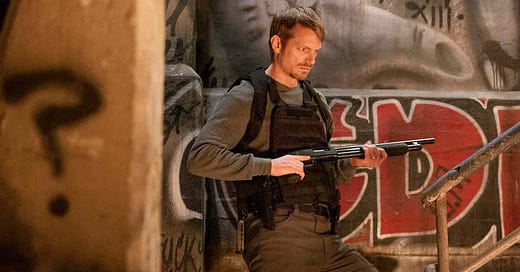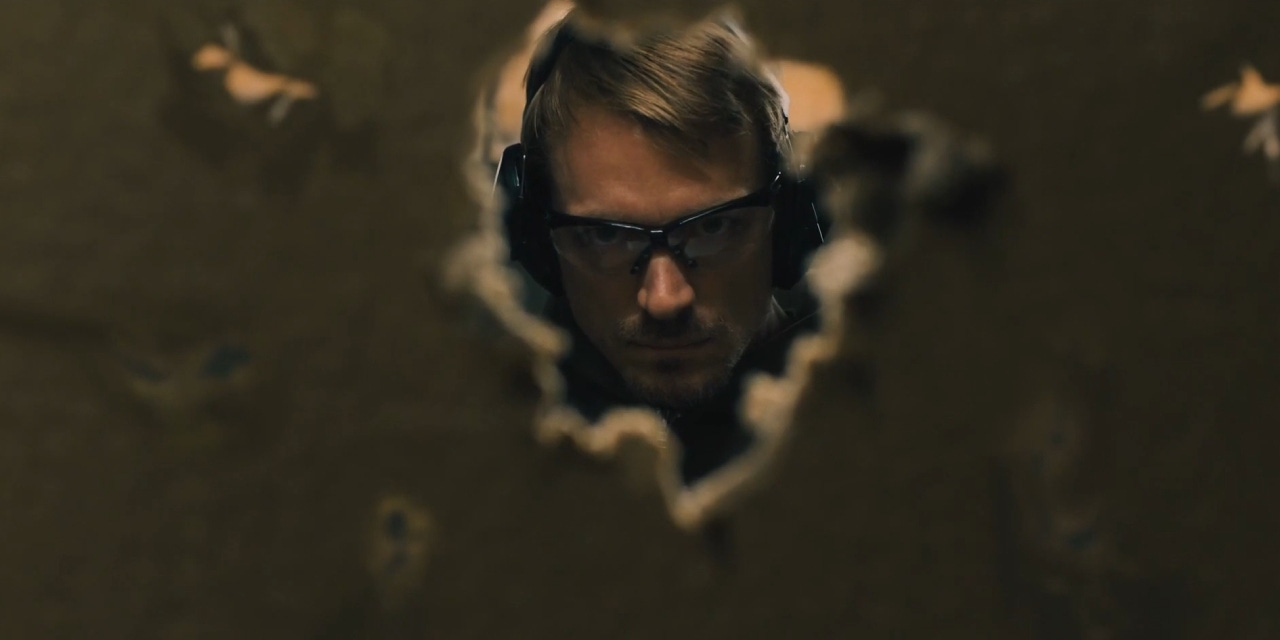I remember hearing about director John Woo back in the early 90’s when his first American film, Hard Target starring Jean-Claude Van Damme, was set to debut. There was a great movie show on MTV called The Big Picture with host Chris Connelly, which featured reviews, previews, interviews, etc. for upcoming movies and I’ll never forget just seeing snippets of Woo’s Hong Kong films before they led into their piece on Hard Target. I didn’t know it at the time, but I was seeing clips of The Killer and Hard Boiled, two of Woo’s biggest films from his early Hong Kong filmmaking days. I desperately wanted to see the full films that I was being teased on The Big Picture. I was hooked and obsessed.
The problem? This was 1993. That means no IMDB, no Internet, no YouTube, no instant access to everything I could’ve ever wanted to know or see about John Woo. So, I did what the rest of us did back then when we were hungry to find old, obscure, cult or otherwise films; I scoured Blockbuster video shelves, but to no avail. Eventually, I saw Hard Target in theaters and got a taste of what Woo was about, even though the theatrical cut was a trimmed-down version of the far superior European cut (which left in the excess of violence and style the director is known for).
Woo would go on to be a Hollywood success before finding his way back to Hong Kong in the mid-2000s. Broken Arrow, Face/Off, and Mission: Impossible 2 were hits, but the double whammy failures of Windtalkers and Paycheck left Woo in a position of not finding good scripts or opportunities that he deemed worthy of his efforts stateside. It was a sad loss, but ultimately he wasn’t making anything close to the kind of gritty, stylish work of his earlier days anyway, so why make things worse?
Back in China, Woo made two films in his Red Cliff series and two films in his The Crossing series, before returning to the old-school action genre with Manhunt, which ended up being a misfire. The Red Cliff films are typically lauded for their epic-scale action and traditional format, but Woo hasn’t touched anything close to the work that made him famous in decades. The unforgettable machismo and creative brutality of films like Hard Boiled, The Killer, A Better Tomorrow, Bullet to the Head, the extended cut of Hard Target, or even the slick, glossy excellence of Face/Off seemed to have dissipated from Woo’s aesthetic.
Now, Woo is back in U.S. theaters after a twenty-year hiatus with Silent Night, a high-concept action thriller starring The Suicide Squad’s Joel Kinnaman, Catalina Sandino Moreno, and Kid Cudi. Early trailers promised a return to form for the director, who looked to be returning to his roots of excessive action ballet, complete with slow-motion antics that prove the format’s worth in spades. I was more than excited to have Woo back in the game if even to have him back behind the camera and producing work, hoping against a hope it would be a renaissance return for the filmmaker.
Sadly, Silent Night is as half-baked as they come, and not even close to the standards Woo created for himself many decades ago as a visionary action director. The story centers on Kinnaman, a father whose son is killed by a stray bullet in a gangland shootout, prompting a vengeance-seeking purpose within him that will not rest. The hook (or, should I say gimmick?) is that Kinnaman’s character is shot in the neck while running after the gang members just after they shot his son, rendering him unable to speak.
The film then makes it so that nobody speaks in the entire film, which at first might seem a clever concept, but it wears very thin as the film progresses. The lack of dialogue could have worked, but it simply isn’t executed in a way that allows the kind of depth, information, and detail to sharpen the other elements of the story. For all its ambiguity, the concept simply leaves far too much to be desired and relies almost exclusively on text messages and long-take stare-offs between characters to convey depth, which never gets very deep.
Kinnaman gives the film his all, however, and plays the role of a man suffering the loss of his child and hungry for revenge with a hyperactive zeal. The actor has already shown his action chops in multiple films, but he does a great job of showing the plight of an everyman (okay, with a six-pack) who’s ultimately in over his head in his quest for revenge. He’s no superhero, that’s for sure, but is no less deadly when provoked.
Since there’s no dialogue and the “silent” concept doesn’t do anything particularly creative to let us know anything about any of the characters (like, at all), it’s impossible to get invested in anyone. Catalina Sandino Moreno is an excellent onscreen cryer and brings the waterworks in nearly every scene she’s in, but we learn absolutely nothing about her otherwise. Kid Cudi, who seems completely out of place in the film, offers little more than hitting his marks. It’s like he won a contest to be in a John Woo movie and gets to show up and do a couple of John Woo things. He’s otherwise just a name in the credits.
The antagonists fare even worse. We learn nothing about them, except that they are mean, have face tattoos, and sell drugs. Oh, and they are also terrible shots, as they have daytime shootouts without ever properly aiming (on Christmas Day no less). They are little more than cartoon cutouts with no real resonance at all, a far cry from the complex duality of the antagonists in Woo’s prior films.
The underdeveloped story and characters, as well as the grating gimmick of a concept, could all be forgiven had Woo shown up on the creative action side. Sadly, Woo is missing here, save for a few glimpses that slip away as soon as you start to get excited. The slow-motion ballet of creative action is replaced with clumsy, John-Wick-style antics that would’ve been impressive if they preceded John Wick, but in Woo’s hands, it feels like he’s simply late to the party and trying to play catch up while making vain attempts to retain the signature that makes him so special.
Remember Chow Yun-Fat barrel rolling over a metal table packed with flour while being shot at before he rolls to a stop and kills the bad guy, the blood spatter all over his freshly-powdered face in Hard Boiled? Remember Van Damme kicking an open container of gasoline at a bad guy on a motorcycle, lifting his shotgun in time to shoot it, and sending the bad guy and his bike exploding out of a window in Hard Target? Remember the gun kick in the sand that put a pistol in Tom Cruise’s hand to take out the main villain in Mission: Impossible II? Remember the-you get the idea.
Well, none of that is in Silent Night. Not even close.
Silent Night teases a few scenarios that could’ve gone down in Woo history as something special, but are never fully thought out, executed or brought to fruition in a way that early 90s Woo would’ve done. I kept waiting for some show of his creative, even silly antics, but none came to pass, replaced instead with a barrage of shootouts and scenes that echo the new John Wick era of action films. This would be fine if it moved the needle higher, but it barely registers at this point. All of the Wick films are better than Silent Night and it’s not even close.
By the time Silent Night rolls credits, the whole thing ends up feeling too little too late. If this were released 10 years ago it very well might’ve been something, but in 2023 this just isn’t up to snuff, not for Woo and not for the genre itself. Like Scorsese’s Killers of the Flower Moon, this ship sinks at the harbor. It made me think of a far better family revenge thriller, James Wan’s Death Sentence (especially the director’s cut), which isn’t as stylistic as the old Woo but has the acting, character, and story that Silent Night so desperately needed to elevate the proceedings. Still, that doesn’t account for Woo leaving out his signature style, which is the biggest miss with the film altogether and I admit that I’d suffer the other issues just to have that in its place.
I will always love John Woo and champion his work. If he keeps making films, I’ll keep watching them, but damn if I don’t miss the guy that gave us so many amazing, bullet-bouncing ballets of violence before. Still, the fact that he gave us those to begin with and set such a high precedent for both himself and the audience is both his blessing and his curse.









